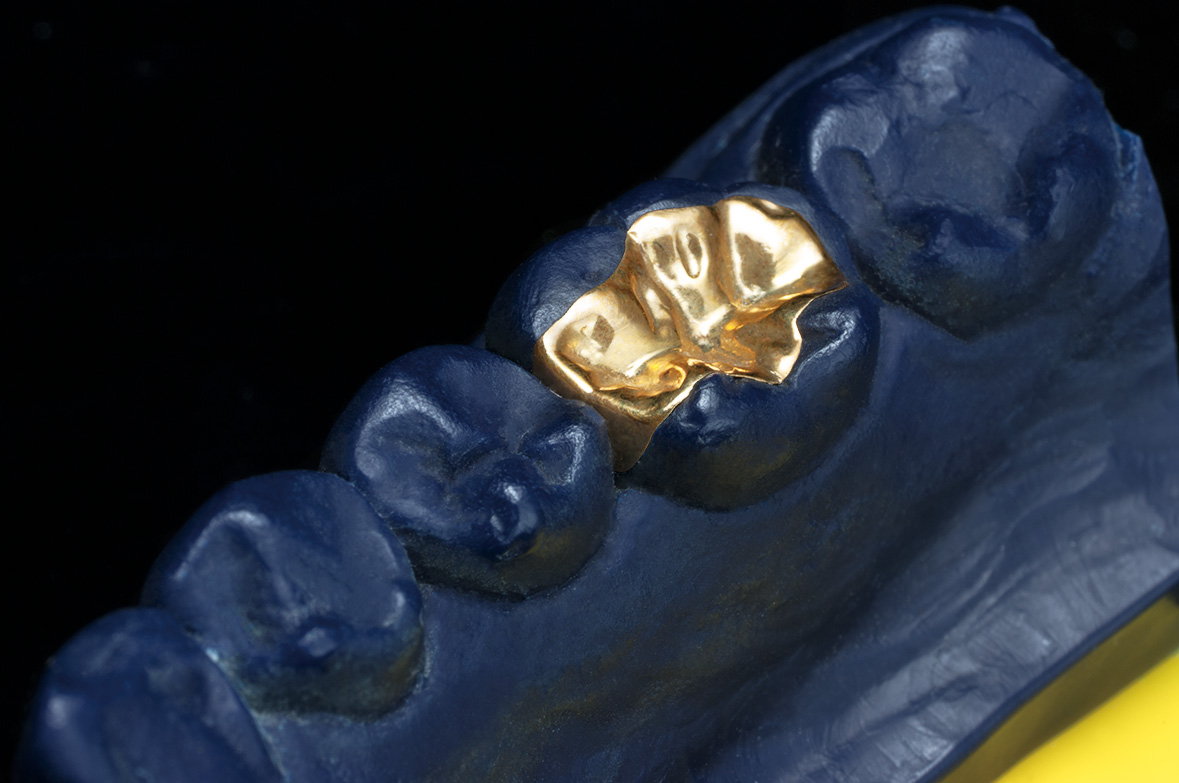Full metal crowns and bridges have been the treatment of choice for restoring teeth subject to high loads due to their reliable performance and longevity.
Benefits
Considerations
- Exhibits excellent long-term durability in high stress-bearing applications
- Only causes low wear of opposing teeth
- Material failure is rare as metal can’t chip or crack
- Focus on long-term clinical performance of the chosen alloy.
- Select alloys that suit the needs of the patient. Avoid “one size fits all” approach.
- Consider Type II alloys for short-span bridges, single crowns, inlays, onlays and partial crowns.
- Type IV alloys suit single crowns to large bridges and implant superstructures.
Why Metal?
Metal is available in a variety of alloy types to suit different indications and price points. It allows minimally invasive preparation designs and restorations of teeth where interocclusal space is limited

Material
High-noble (precious) – minimum 60% noble metal (gold, palladium and/or platinum),
of which more than 40% must be gold.
Noble (semi-precious) – minimum 25% noble metal
Base (non-precious) – less than 25% noble metal
Indications
Universal
Crowns
Bridges
Inlays/onlays (primarily in posterior teeth)
IMPRESSION TECHNIQUE
Digital or traditional
AESTHETICS
Margins
Chamfer
Etch
No
DURABILITY
CEMENTATION
Conventional or adhesive
FLEXURAL STRENGTH
Alloy-dependent
METHOD OF MANUFACTURE
Cast by technician
MATERIAL SHADES/COLOURING
Colour varies with gold content/alloy composition
STAIN RESISTANCE
SPAN/INGOT SIZE
Small to large









